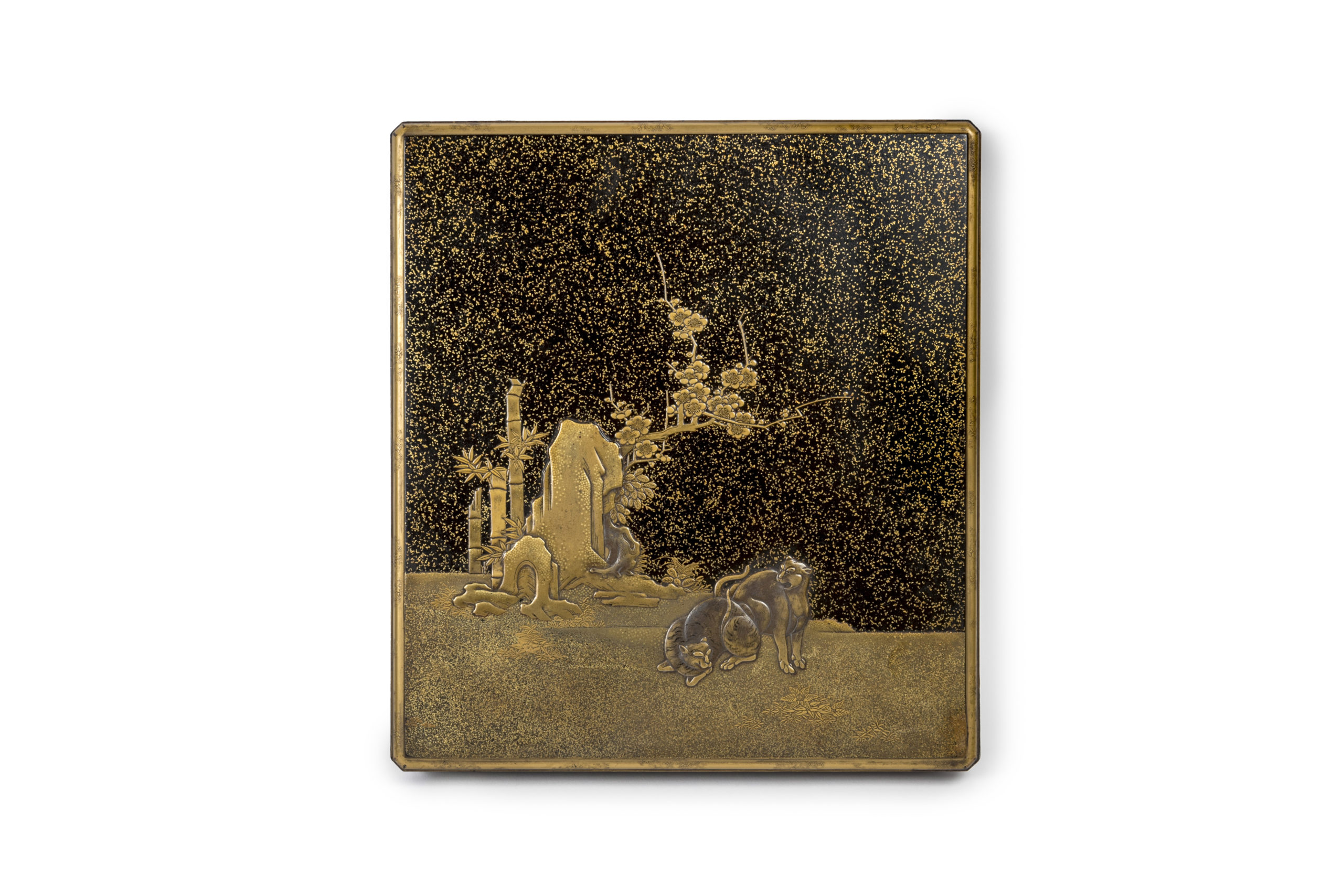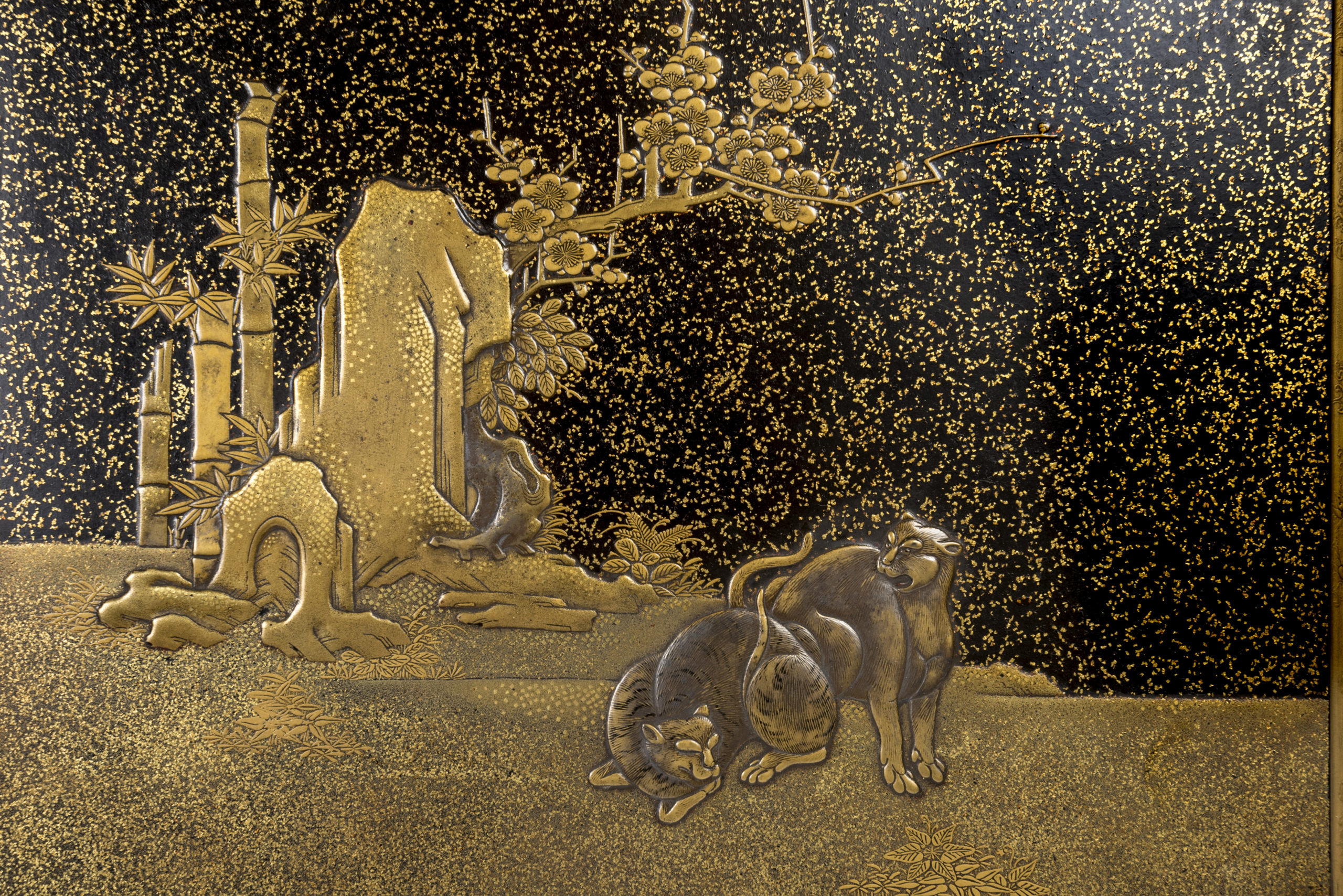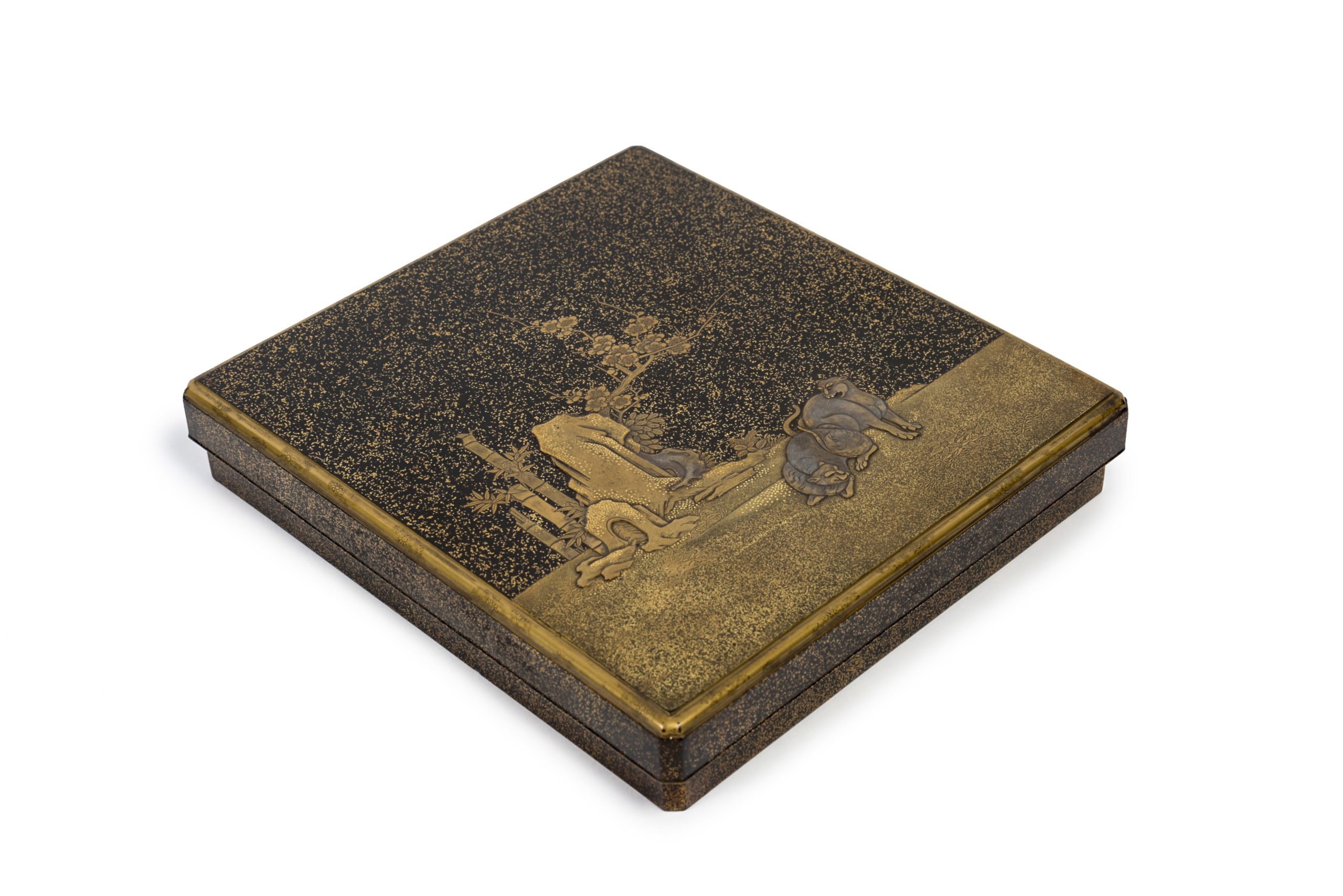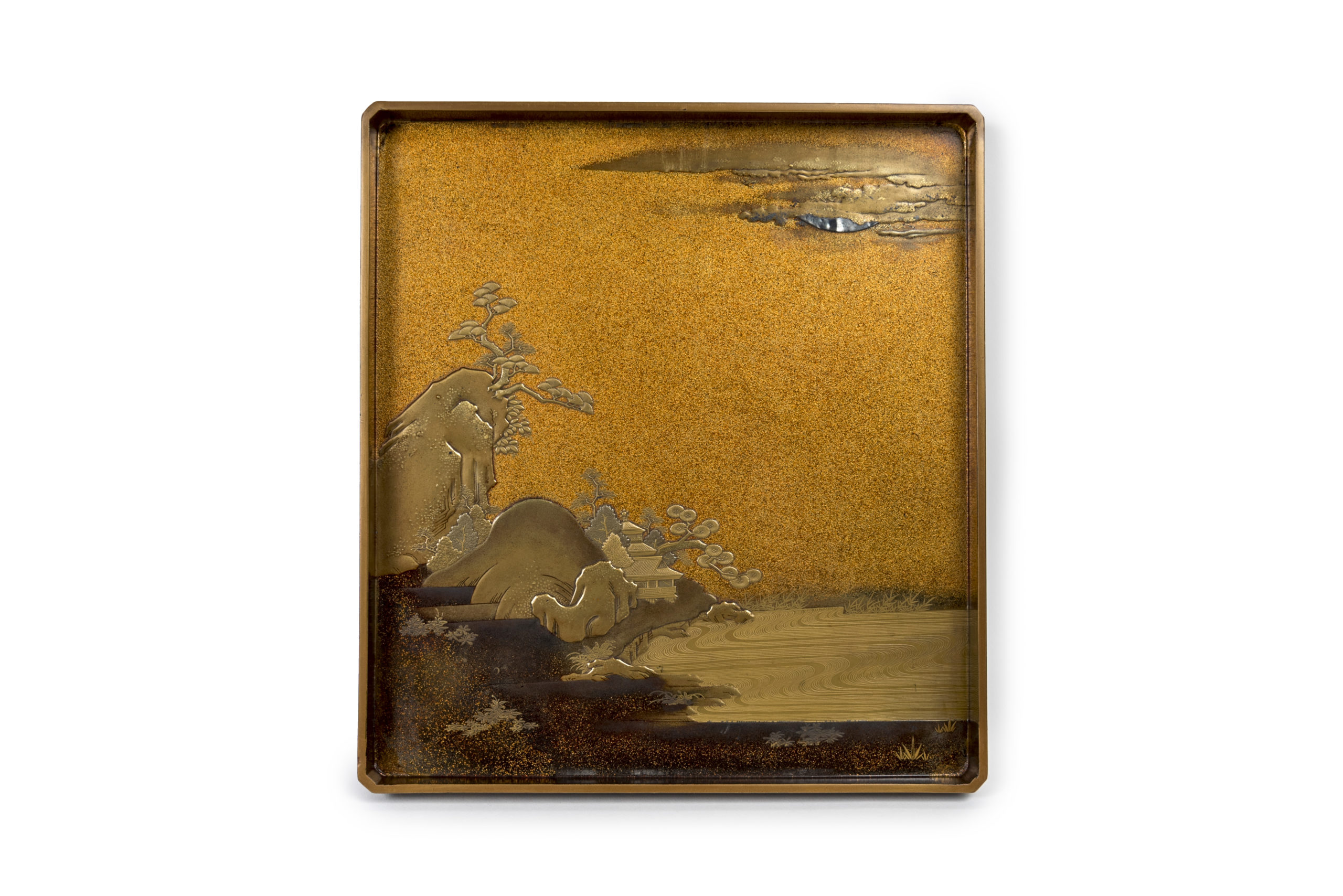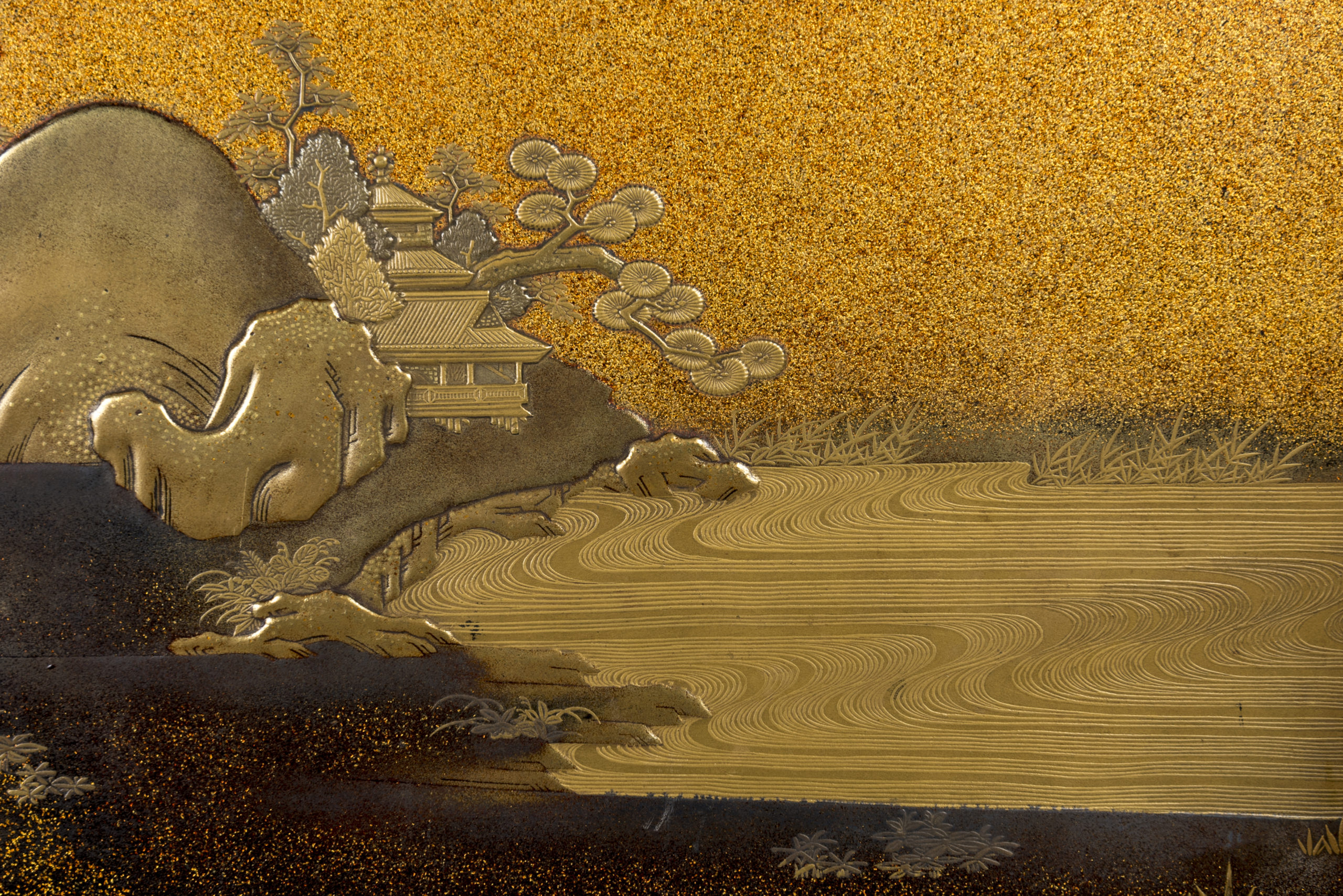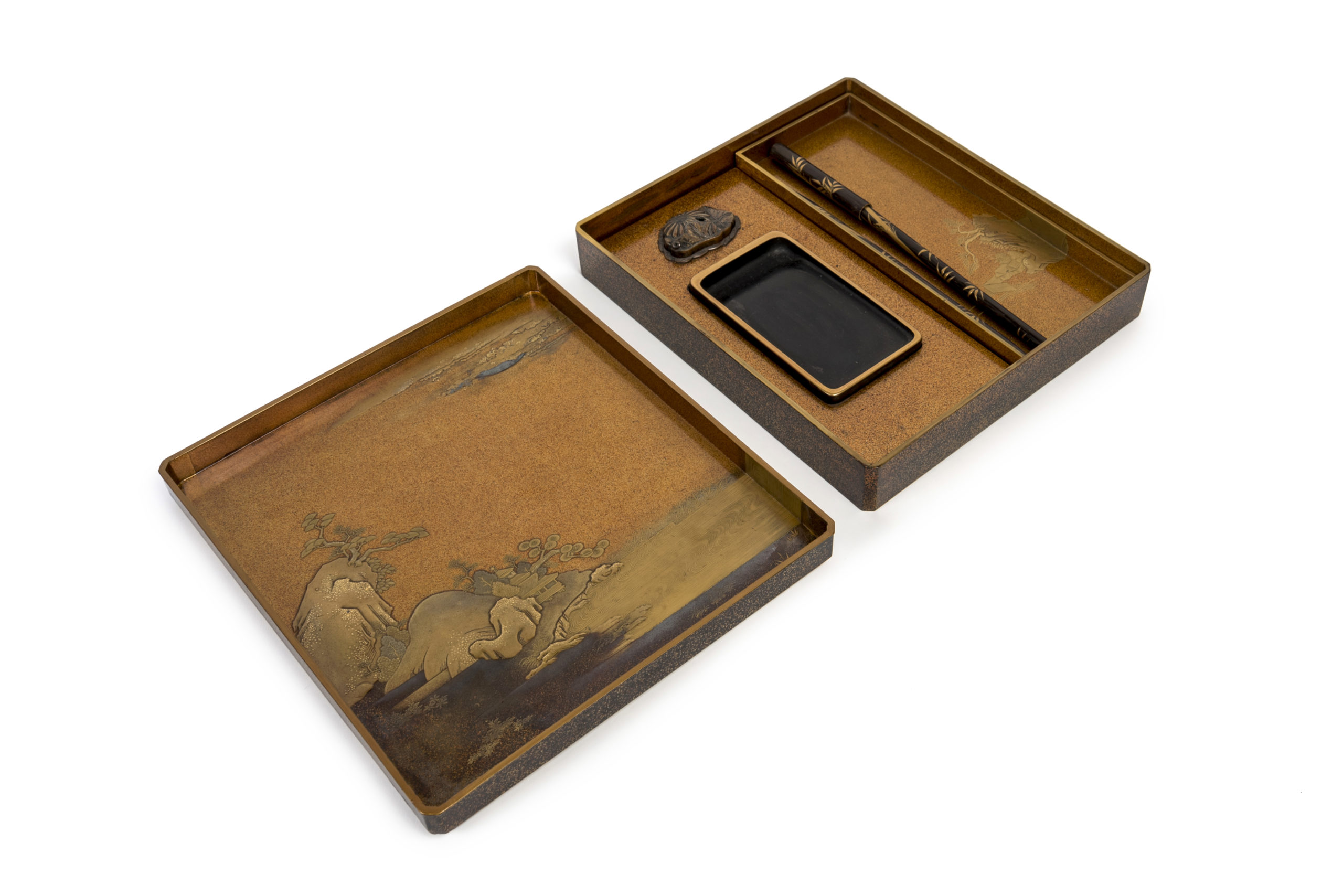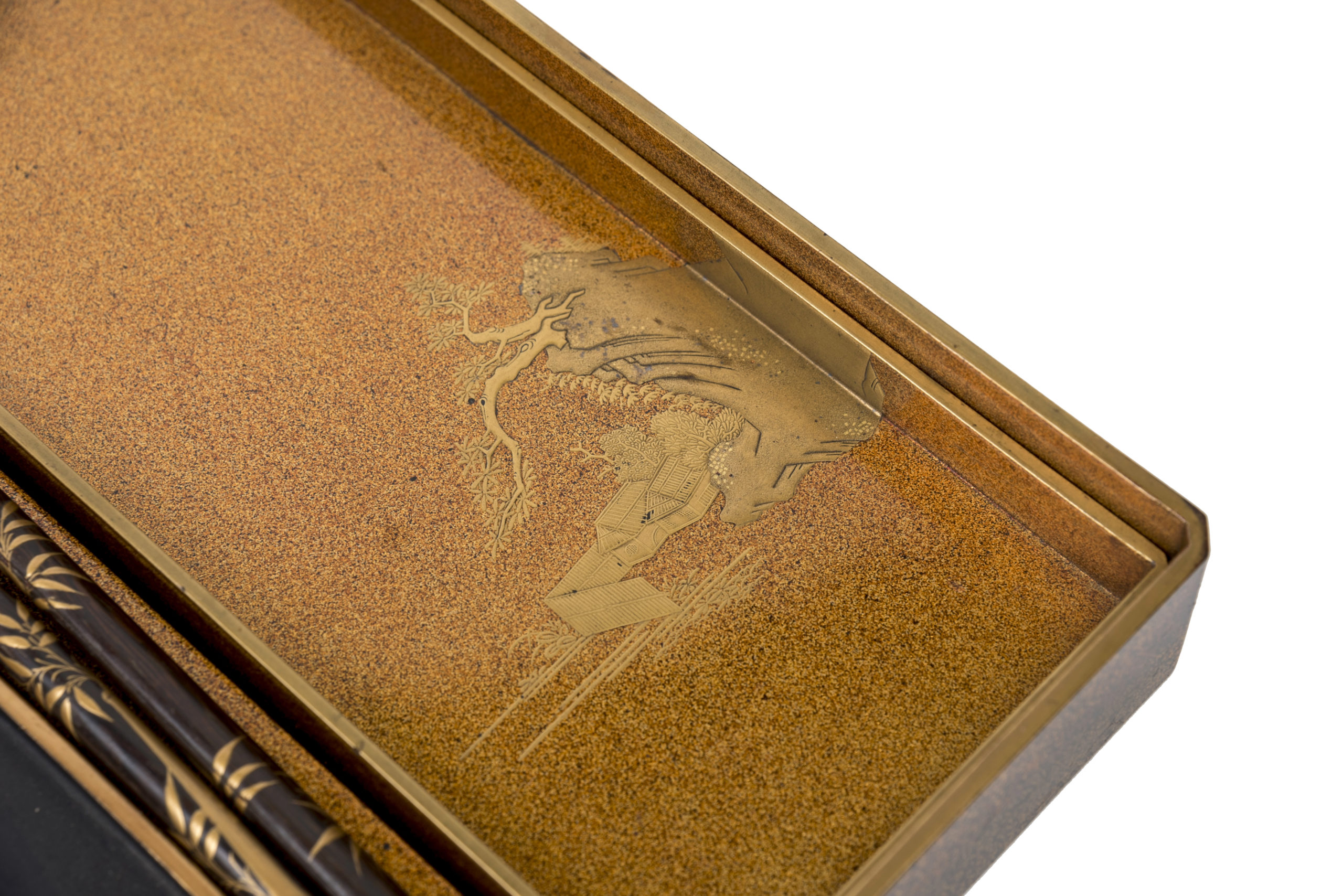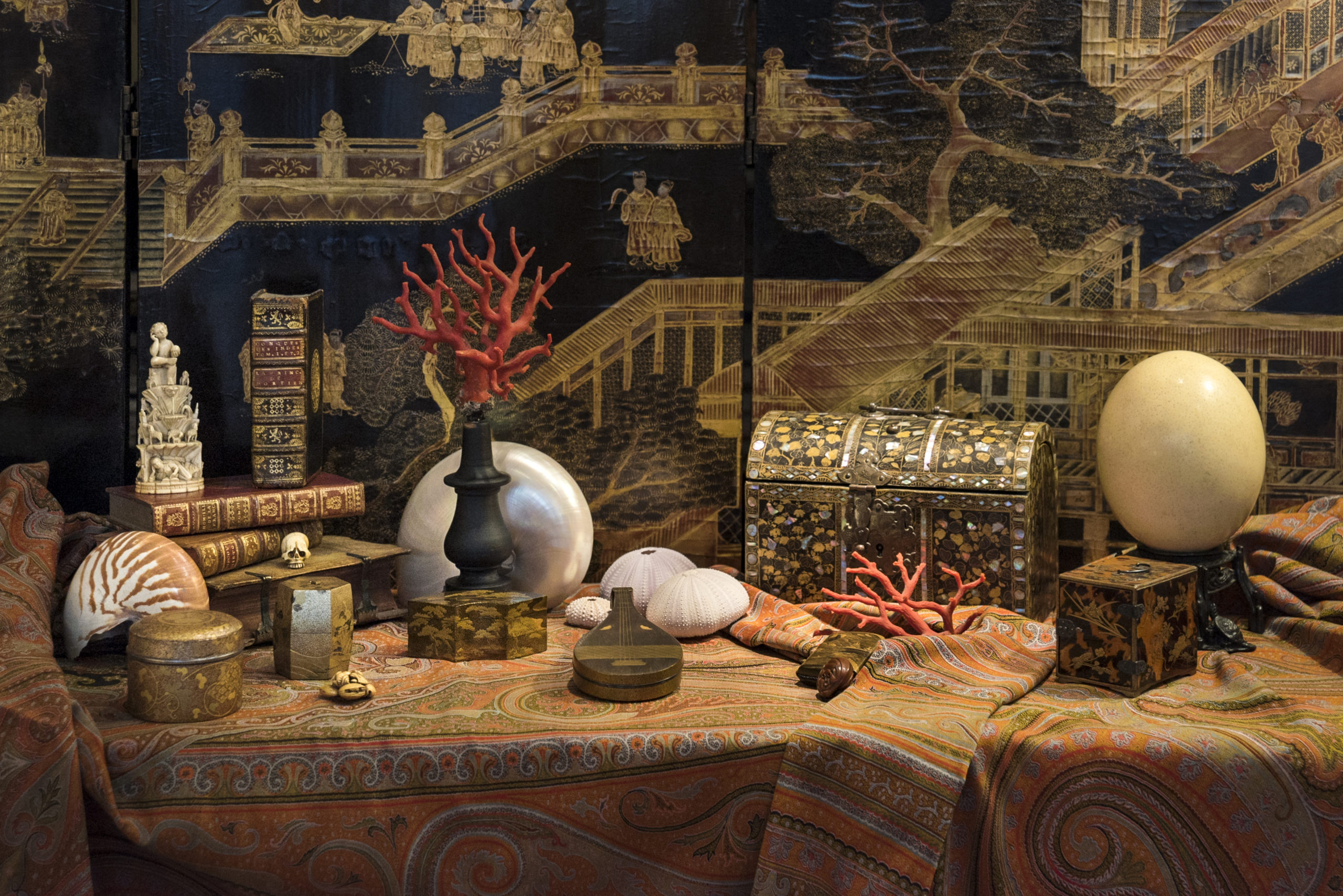Description
Intérieur du couvercle avec un paysage lacustre.
Intérieur du suzuribako muni à gauche d’une pierre à encre surmontée d’un godet à eau en cuivre en forme de chrysanthème, ainsi qu’un pinceau et un petit couteau. Il comprend dans la partie droite un compartiment de rangement.
Inscription sous la pierre à encre « Pierre à encre faite par Nakamura Chobe ».
Bien que le tigre ne soit pas originaire du Japon, une grande symbolique lui est accordé. Figure de courage, l’animal a été introduit par le bouddhisme depuis la Chine. Selon la tradition chinoise, le tigre serait issu de l’une des étoiles de la Grande Ourse. Il serait capable de contrôler le vent et son rugissement serait une métaphore du tonnerre.
Dans l’art, le tigre est parfois représenté dans une bambouseraie, comme c’est le cas sur notre suzuribako. Il existe plusieurs explications à cette combinaison. Le bambou ne résistant pas au vent, cela en fait un refuge naturel pour l’animal. Une autre explication voudrait que le bambou agité par le vent représente les péchés. Pour pouvoir y pénétrer et ainsi conjurer le mauvais sort, il faut avoir la force d’un tigre. Avoir le « courage du tigre » est donc une qualité exemplaire, en particulier pour les samouraïs.
Pierre à encre faite par Nakamura Chobe
Japon – Période Edo (1603-1868), moitié du XVIIIe siècle
Hauteur : 5 cm – largeur : 21,8 cm – profondeur : 24,2 cm
Inside of the lid with a lake landscape.
The interior of the suzuribako is composed with an inkstone, topped by a copper water bucket in the shape of a chrysanthemum on the left side, with a brush and a small knife. It includes in the right part a storage compartment.
Inscription under the inkstone « Inkstone made by Nakamura Chobe ».
Although the tiger is not native to Japan, it has a high symbolic. The figure of courage was introduced by Buddhism from China. According to the Chinese tradition, the tiger is from one of the stars of the Great Bear. It would be able to control the wind and its roar would be a metaphor for thunder.
In art, the tiger is sometimes represented in a bamboo grove, as it is the case on our suzuribako. There are several explanations for the combination. Bamboo is not wind resistant, si it is a naturel refuge for the animal. Another explanation is that the bamboo is agitated by the wind and represents sins. To be able to penetrate it and thus ward off evil, one must have the strength of a tiger. Having the “tiger courage” is therefore an exemplary quality, especially for samurais.
Inkstone made by Nakamura Chobe
Japan – Edo period (1603-1868), mid 18th century
Height: 1.97 in. (5 cm) – width: 8.58 in. (21.8 cm) – depth: 9.53 in. (24.2 cm)

